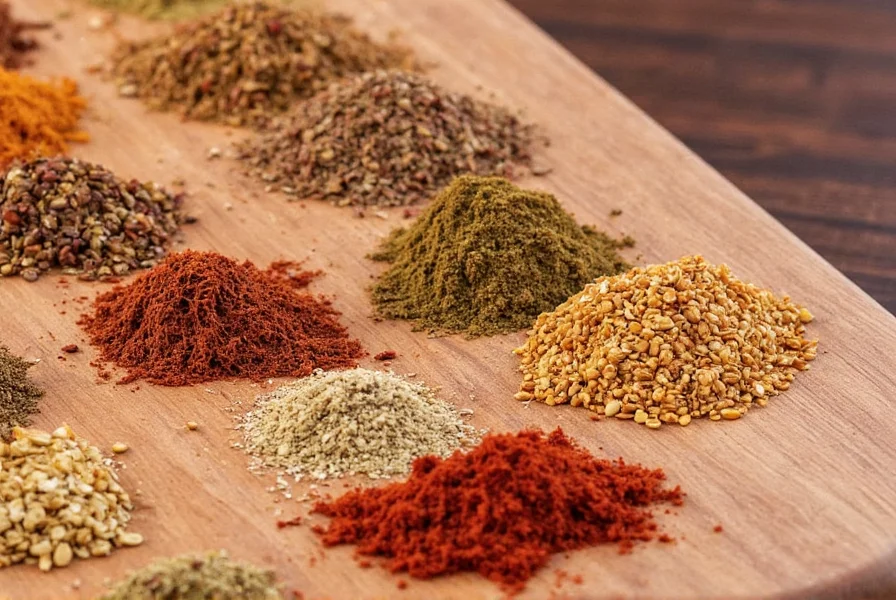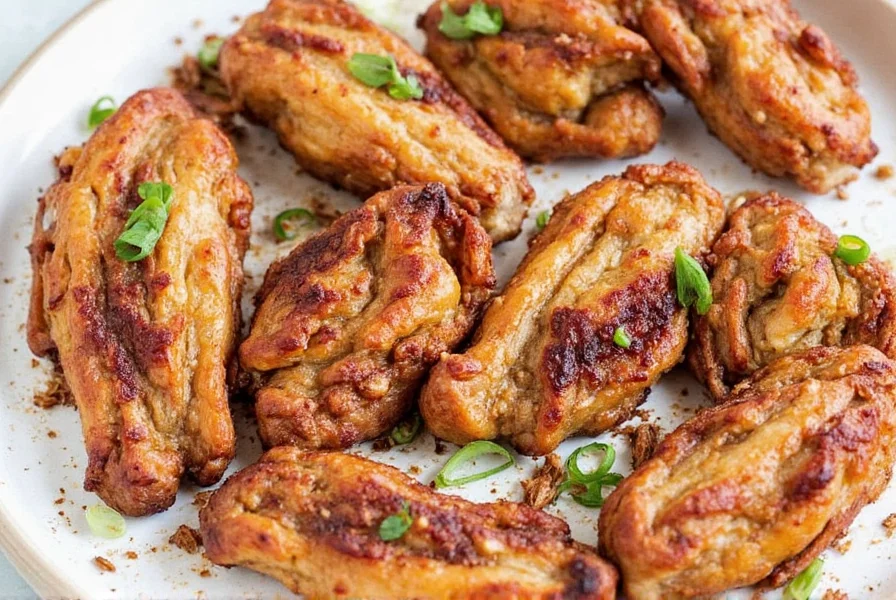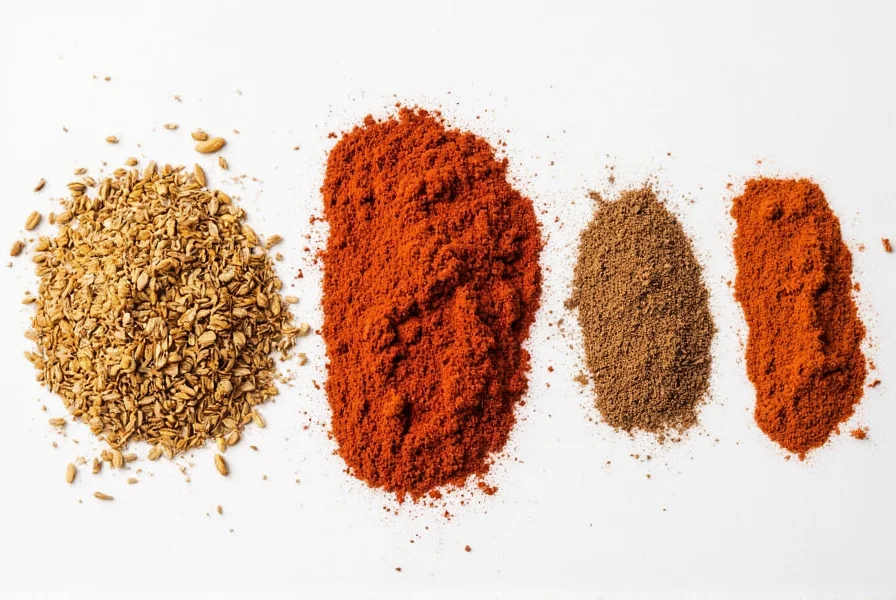Table of Contents
Introduction
In Indian cuisine, roasting spices is a fundamental technique that transforms simple ingredients into complex, aromatic dishes. If your homemade curry lacks the depth of restaurant-style flavors, you're likely missing this crucial step.
| Spice | Raw Taste | Roasted Taste |
|---|---|---|
| Cumin | Bitter, earthy | Nutty, warm, toasted |
| Coriander | Grassy, citrusy | Sweet, floral, slightly woody |
| Fennel Seeds | Mildly sweet | Licorice-like, robust |
Roasting spices unlocks essential oils that create signature aromas and mellow sharp edges. This ancient technique is essential for authentic Indian curries, dals, and spice blends like garam masala.
Why Roast Spices for Indian Cooking?
In Indian culinary tradition, roasting spices isn't optional—it's the foundation of flavor. When raw spices meet gentle heat, they release volatile compounds that create complex layers missing in unroasted dishes. This process, called blooming, is critical for:
- Developing deep, rounded flavors in curry bases
- Reducing bitterness in spices like cumin and fenugreek
- Enhancing aroma for authentic restaurant-style results
- Maximizing the potency of whole spices before grinding
Professional Indian chefs always roast spices fresh before cooking. Skipping this step is why many home-cooked curries lack depth and complexity.
Top 10 Roasting Hacks for Indian Curries
- Hack #1: Use a cast iron skillet for authentic Indian results—its even heat distribution mimics traditional tawa cooking.
- Hack #2: Roast whole spices before grinding: This preserves essential oils and prevents bitterness in your curry base.
- Hack #3: For garam masala: Toast cumin, coriander, and cardamom together for 90 seconds before grinding to balance flavors.
- Hack #4: Cool completely before grinding: Use a mortar and pestle for small batches to retain maximum aroma.
- Hack #5: Add roasted spices to hot oil: This "blooms" them further for deeper flavor penetration in your curry.
- Hack #6: Master the "three-second rule": Remove spices from heat when they release fragrance (typically 1-3 minutes), as residual heat continues cooking.
- Hack #7: Toast spices in order: Start with heavier spices like cumin and mustard seeds, then add lighter ones like coriander.
- Hack #8: For dals: Lightly roast turmeric and cumin before adding to lentils for richer color and flavor.
- Hack #9: Never roast pre-ground spices: They burn instantly and create bitter notes in your dish.
- Hack #10: Store roasted spices in airtight glass jars away from light—this preserves potency for authentic Indian curries.
Buying Guide for Indian Cooking Tools
Traditional Indian kitchens rely on specific tools for perfect spice roasting. Here's what to prioritize:
| Tool | Features | Advantages | Best For |
|---|---|---|---|
| Cast Iron Skillet | Heavy, retains heat well | Even heating, durable, excellent for controlled toasting | Traditional Indian curries and dals |
| Stainless Steel Tawa | Flat surface, lightweight | Quick to heat, ideal for small batches of whole spices | Roasting mustard seeds and cumin for tempering |
| Mortar and Pestle | Stone or ceramic | Preserves volatile oils better than electric grinders | Small-batch grinding for garam masala |
| Spice Jar Set | Dark glass with airtight seals | Protects roasted spices from light and moisture | Long-term storage of Indian spice blends |

Storing Roasted Spices Like a Pro
Indian chefs know roasted spices lose potency rapidly. Protect your investment with these storage methods:
- Dark Glass Jars: Amber or cobalt blue jars block light that degrades flavor—essential for Indian spice blends.
- Refrigerate Strong Flavors: Store roasted asafoetida and fenugreek in the fridge to prevent rancidity.
- Label with Date: Track freshness; roasted cumin lasts 2 months, coriander 3 months.
- Small Batches: Only roast what you'll use in 4 weeks for authentic curry flavors.
- Avoid Plastic Containers: They absorb spice oils and transfer off-flavors to your dishes.

Frequently Asked Questions
- How long should I roast spices for Indian curries?
- Most Indian spices take 1-3 minutes. Cumin turns nutty at 2 minutes, coriander at 1.5 minutes. Remove when fragrant—over-roasting creates bitterness in your curry base.
- Can I roast ground spices for Indian cooking?
- Never roast pre-ground spices. They burn instantly and ruin your dish. Always roast whole spices first, then grind. This preserves the essential oils that create authentic Indian flavors.
- How do I know when spices are properly roasted for curry?
- Three key signs: 1) Strong, sweet aroma fills your kitchen, 2) Spices darken slightly (cumin turns golden-brown), 3) You hear a faint crackling sound. Remove immediately at peak fragrance.
- What's the difference between toasting and roasting for Indian spices?
- In Indian cooking, these terms mean the same process. "Toasting" specifically refers to dry-heat roasting in a skillet (tawa), which is the traditional method for curry bases.
- Can I roast spices in the oven for Indian dishes?
- Not recommended. Oven roasting lacks precise control for small batches. Traditional Indian chefs use stovetop skillets for immediate heat adjustment—critical for delicate spices like cardamom.
- How much do roasted spices cost compared to pre-roasted?
- Raw whole spices cost 25-35% less than pre-roasted. More importantly, home-roasted spices retain 100% potency while pre-roasted lose 40% flavor within 2 weeks of packaging.
- Can I roast spices in bulk for Indian cooking?
- Roast no more than 1/4 cup at a time. Larger batches roast unevenly, creating bitter spots. For Indian spice blends like garam masala, roast in small batches and store properly.
- What spices shouldn't be roasted for Indian cuisine?
- Delicate spices like saffron, dried mint, and fresh ginger shouldn't be roasted. Turmeric powder burns easily—always add it raw to hot oil after roasting other spices.
Conclusion
Mastering spice roasting is the secret behind authentic Indian curries. This simple technique transforms ordinary ingredients into restaurant-quality dishes by unlocking deep, complex flavors that raw spices simply can't deliver.
Remember: Always roast whole spices fresh, use proper tools like cast iron skillets, and store properly in dark glass jars. These steps ensure maximum flavor in every curry, dal, or spice blend you make.
Next time you cook Indian food, take that extra minute to roast your spices. Your taste buds—and your guests—will thank you.












 浙公网安备
33010002000092号
浙公网安备
33010002000092号 浙B2-20120091-4
浙B2-20120091-4